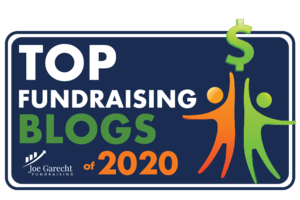Loyal supporters are valuable assets for every nonprofit organization.
Unfortunately, there is an alarming lack of understanding about the definition of “loyal supporter.” Before we address that issue, however, let’s look briefly at why loyal donors are so important.
Because it’s more cost-efficient to retain donors than acquire new ones, loyal donors allow charity fundraising programs to operate more efficiently. The lifetime value of such donors is greater. More money, more cost-effectively raised means more funds for mission fulfillment.
Interestingly, loyal donors also exhibit greater engagement tendencies as researchers Adrian Sargeant, PhD and Elaine Jay, PhD observed in their book Building Donor Loyalty:
Donors who remain loyal are also much more likely to engage with the organization in other ways. Long-term donors are significantly more likely than single-gift donors to offer additional gifts in response to emergency appeals, to volunteer, to upgrade their gift levels, to lobby for the organization, to actively seek out other donors on the organization’s behalf, to buy from a gift catalogue, and to promote the organization to friends and acquaintances.”
Sargeant and Jay even quantify the value of this additional activity. In their experience, they have seen that such activities can increase donor lifetime value by 150 to 200 percent.
Increasingly, charities are coming to appreciate the benefits of having loyal donors. For example, progressively more development professionals understand that loyal supporters make the best planned giving prospects.
This raises the question: Who is a “loyal supporter?”
In the context of planned gift marketing, one development professional recently defined loyalty as a combination of giving frequency, giving recency, and cumulative giving amount. I agree, but only to a point.
 First, as Sargeant and Jay describe in their book, loyalty can be either passive or active. Passively loyal donors might give because their friends give, because they want to do something while they continue to search for the charity that is just right, or even because of inertia. By contrast, actively loyal donors care passionately about the organization and its mission. They identify with the values of the organization and regard donations to it as an essential, rather than discretionary, part of their personal budgets.
First, as Sargeant and Jay describe in their book, loyalty can be either passive or active. Passively loyal donors might give because their friends give, because they want to do something while they continue to search for the charity that is just right, or even because of inertia. By contrast, actively loyal donors care passionately about the organization and its mission. They identify with the values of the organization and regard donations to it as an essential, rather than discretionary, part of their personal budgets.
When it comes to fundraising, actively loyal donors are the only truly loyal donors. In other words, not all regular donors rise to the level of being loyal supporters.
Second, people can be loyal supporters without being donors. They even can be so intensely loyal that they make a generous legacy commitment.












